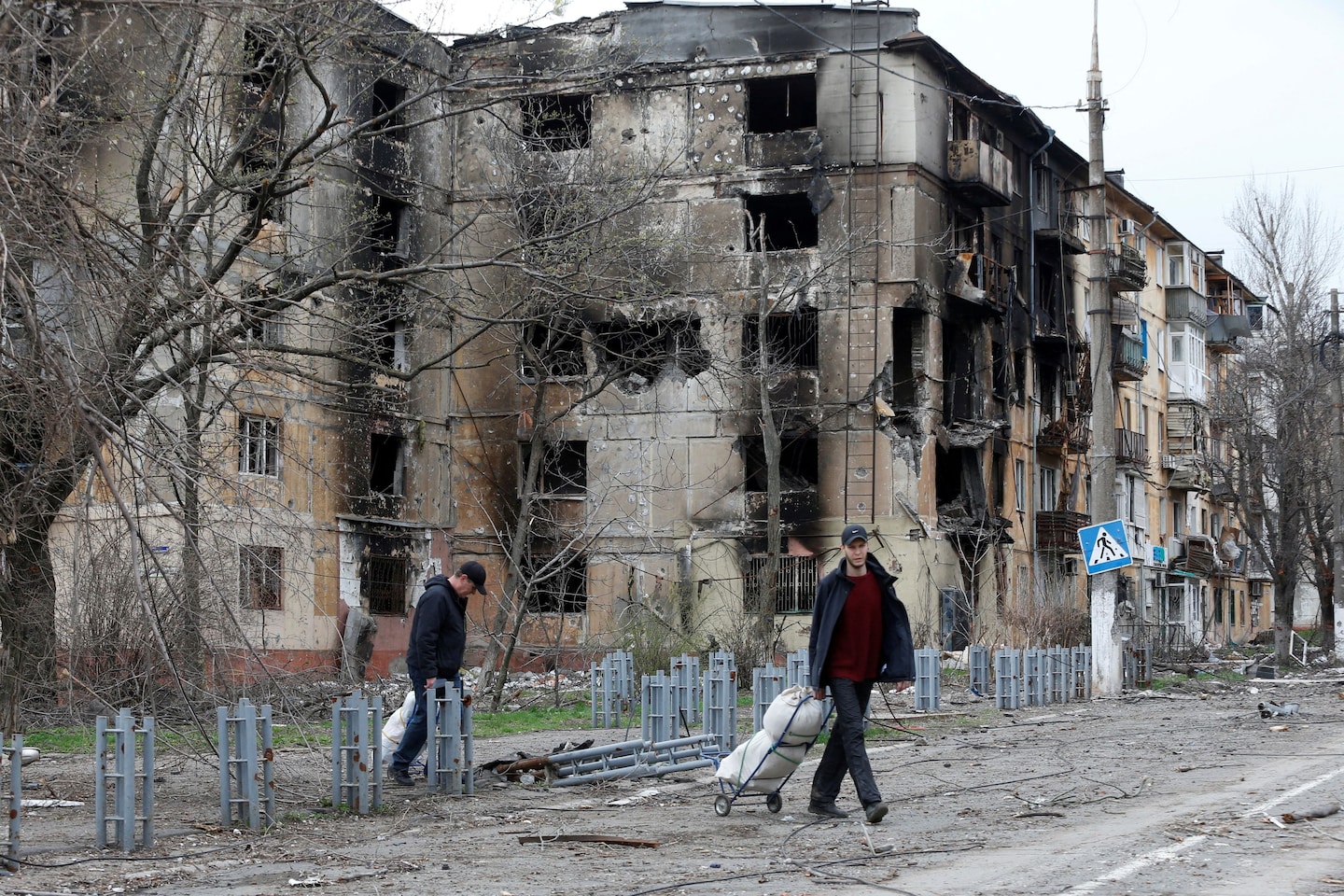The United States and its Western allies are in a race against time to provide Ukraine with enough weapons and ammunition to blunt the ferocious second-wave assault that Russia launched Tuesday against the eastern part of the country.
As Ukraine war shifts, the Russians have every advantage but one

For now, “our task is to keep guns and ammo flowing,” says one senior defense official, who described the rush to provide weapons. “If we do that, the Ukrainians will stay in the fight. … They will not put their arms up in defeat.”
As Round 2 begins, Russia appears to be attempting a classic pincer movement to crush Ukrainian forces in the east. The Russian assault will push west from the Donbas region, but also south from the Kharkiv area and north from the coast near Mariupol. The aim is to annihilate Ukraine’s army in this eastern pocket, U.S. analysts believe.
The Russians have every advantage in this fight but one: It’s not their land. Ukrainians have shown that they can mount a courageous and disciplined defense against a numerically stronger Russian force, as they did in repelling Russian attacks against the capital of Kyiv last month.
Follow David Ignatius‘s opinions
FollowHoping to reverse Russia’s poor showing in Round 1, President Vladimir Putin and his generals are reverting to the traditional Russian tactic of concentrating immense firepower in a limited theater of battle, and then pounding the enemy. This approach will be easier in the East, where the flat ground will enable the advancing army, and Ukrainian hit-and-run tactics are more difficult to execute.
U.S. commanders believe Russia has gathered 70 to 80 combat battalions around this eastern front to attempt what military strategists describe as a “double encirclement” of Ukrainian forces. This tactic has been used by victorious armies for centuries, ever since Hannibal famously encircled the Roman army at Cannae in 216 B.C.
For the Russians, the model is the Battle of Stalingrad, during which the Red Army in November 1942 broke through German lines from the north and east of the embattled city. They enveloped German and other Axis forces in what the Russians called “Operation Uranus,” which proved to be the decisive battle on the Eastern front.
The Russian tactic was adopted from the German army, which described such pincer movements as kesselschlacht, or “cauldron battle.” Russian invaders now hope to make the Donbas and eastern Ukraine a deadly cauldron, with no escape.
To help Ukraine combat this blitzkrieg, U.S. commanders have been racing to move weapons and ammunition into Ukraine. The Americans are working with NATO allies to send artillery, howitzers, rockets, antiaircraft and anti-artillery radars and missiles, antiship missiles, and tanks — in addition to the Javelin antitank weapons and Stinger antiaircraft missiles that proved so useful in Round 1.
The United States dispatched its latest weapons package last week, valued at about $800 million, bringing total U.S. security assistance since the war began on Feb. 24 to $2.5 billion, according to the State Department. Pentagon planners are already working on the next two tranches, which officials say will include more artillery tubes, cannons, rockets and drones.
The Ukrainians want NATO to send Soviet-era MiG-29 jets, too. But Pentagon officials argue that the used MiGs would provide limited practical benefit to Ukraine at considerable risk to NATO. Ukraine’s best air-defense system has been its big S-300 missile arrays and the smaller Stingers, not its air force, Pentagon officials believe. By using those antiaircraft weapons effectively, Ukraine has denied Russia the air supremacy it wants.
As the United States and its NATO allies deliver weapons to Ukraine, they are observing some tacit “red lines,” to avoid prompting Russian escalation. The United States is refraining from supplying Kyiv with offensive, long-range ballistic missiles that could strike Moscow, for example.
The Kremlin warned Washington in a diplomatic note last week that sending the “most sensitive” weapons could bring “unpredictable consequences.” U.S. officials saw the complaint about American support for Ukraine as an affirmation that current assistance is working, but not as a qualitatively different statement of Russian policy.
Despite congressional pressure to take more risks in aiding Ukraine, the Biden administration appears determined to avoid any direct military confrontation with a nuclear-armed Russia. CIA Director William J. Burns cautioned in remarks last week: “Given the potential desperation of President Putin and the Russian leadership … none of us can take lightly the threat posed by a potential resort to tactical nuclear weapons or low-yield nuclear weapons.”
Considering those concerns, it was perhaps significant that Russian Foreign Minister Sergei Lavrov in an interview with Indian television on Tuesday reiterated a past joint statement by Moscow and Washington agreeing that, as he put it, “there must be no nuclear war, don’t even think about it.”
What’s ahead in Ukraine is a brutal conventional-arms slugfest, reminiscent of the tank and artillery battle fought across the Ukrainian steppes during World War II. But the outcome is impossible to predict and the stakes are enormous. How this battle unfolds will determine not only the future of Ukraine but the balance of Europe for decades to come.






